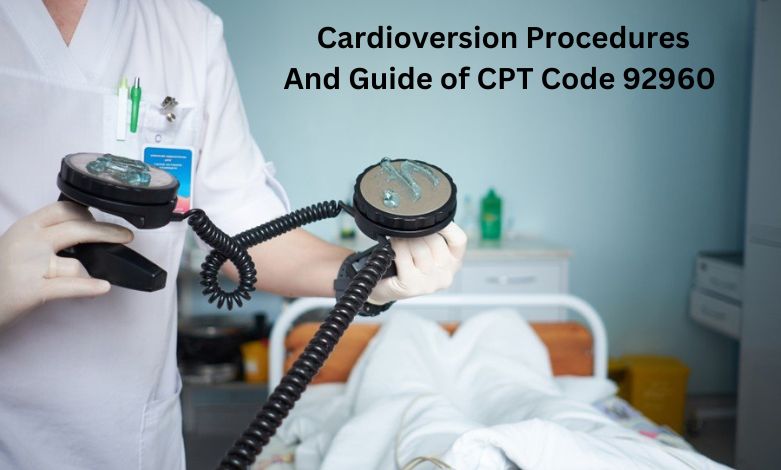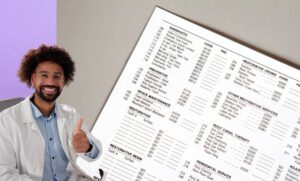Cardioversion is coded as both an internal and an exterior procedure, as you may be aware. Whether or not the patient is anesthetized, you can tell when they need a cardioversion when they come to you with an irregular heartbeat. It might be challenging to do a cardioversion since the clinicians must appropriately code it. This is crucial because, as cardioversion is considered high-risk, inaccurate coding may result in claim rejections or even audits. Now let’s get started and see how to correctly use the cardioversion CPT code.
What is meant by cardioversion?
An electrical shock is used in cardioversion, a medical treatment, to treat an arrhythmia, or abnormal heartbeat. There are two methods for doing it: internally or outside.
External cardioversion: The patient receives a synchronized electric shock to the heart via electrodes put on the chest. This type of cardioversion is also known as “direct current cardioversion (DCC)”.
Internal cardioversion: To shock the heart with electricity, a medical professional puts a tiny electrode catheter into a vein in the groin. This type of cardioversion is also known as “internal direct current cardioversion (IDCC)”.
Cardioversion CPT Code Description for 92950:
92950 CPT code includes:
- External cardiac compression, maybe in combination with ventilation during CPR.
- External transthoracic defibrillation.
- Vital statistics and cardiac rhythm are continuously monitored.
- Medications and fluids are administered during resuscitation.
If defibrillation is performed in the absence of CPR, especially in emergency departments or critical care units, it is not invoiced separately.
Here is when you’d use CPT code 92950:
- If a patient has a cardiac arrest, CPR is performed. After defibrillation, the cardiac rhythm normalizes.
- When a patient experiences a cardiac arrest, CPR is initiated. Multiple attempts at defibrillation have not resulted in a stable heart rhythm.
- A patient with an undetected cardiac arrest is found pulseless and unresponsive. When the patient’s heart rhythm stabilizes after receiving CPR and defibrillation, they are taken to a medical facility.
Uses and Reimbursement Rate of cardioversion CPT Code 92960:
Electrical cardioversion is coded as 92960 and should always be recorded as a separate procedure. When using paddles or hands-free technology, there are no special codes or modifiers to follow. It is crucial to remember that reporting it in the context of critical care is not permitted. Physicians should report CPT codes 99291 and 99292 instead of critical care time. It is required to explain the procedure to the patient and go over the hazards involved with the electrical cardioversion in order to bill for this CPT code.
The medical professional can start the elective cardioversion as soon as the patient signs a consent document. For instance, a person with intermittent atrial fibrillation may choose to restore a normal heart rhythm, a patient diagnosed with intermittent atrial fibrillation may choose to undergo an elective cardioversion. To restore a normal heart rhythm, a patient diagnosed with intermittent atrial fibrillation may choose to undergo an elective cardioversion. The cardiologist goes over the possible risks and advantages prior to the procedure. The patient is then given a consent form to sign, underscoring the importance of patient agreement for elective therapies and confirming that they understand and consent to the surgery. In a non-facility context, the cost of CPT code 92960 is $156.56, whereas in a facility setting, it is $108.01.
Uses and Compensation Ratio for cardioversion CPT Code 92961:
Procedures involving intrinsic cardioversion are documented using CPT 92961. When it is carried out in tandem with another operation, like an electrophysiological study or cardiac catheterization, it should not be reported separately. For example, code 92961 would not be recorded separately if a patient had an internal cardioversion done during a cardiac catheterization. It should be noted that clinicians may bill three units provided their paperwork demonstrates the procedure’s medical necessity, even though two units for both CPT codes 92960 and 92961 might be recorded on the same day of service. CPT Code 92961 in the facility setting is compensated at $242.63.
How should a defibrillator be coded?
In the CPT list, which covers a wide range of services, cardiopulmonary resuscitation (CPR) is explicitly categorized as 92950. Interestingly, defibrillation is covered under the general category of CPR services rather than having its own CPT number.
Conclusion:
In conclusion, correct coding of cardioversion treatments is necessary to maintain appropriate documentation of the patient’s medical record and to provide appropriate compensation. Healthcare practitioners may make sure that they are accurately classifying and billing for these operations by being aware of the various forms of cardioversion and the CPT codes that correspond with them. You can take use of The Medicators ‘s experience if you’re having trouble keeping track of your medical billing services related to cardiology. Cardiology billing services are the area of expertise for The Medicators, an experienced medical billing firm. They can assist you in appropriately coding cardioversion operations thanks to their knowledge and experience, which will eventually increase your practice’s overall revenue and reimbursement rates.









